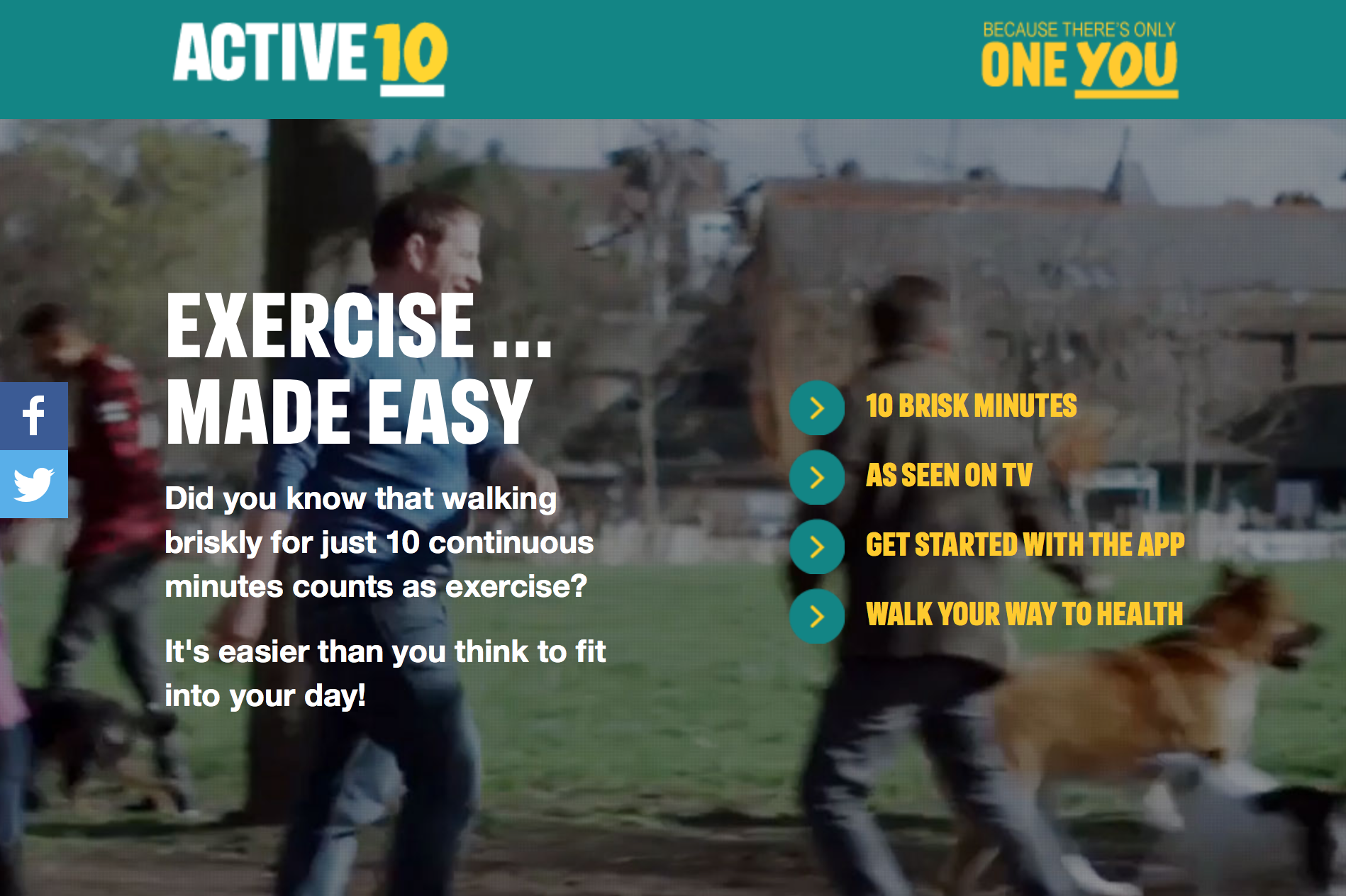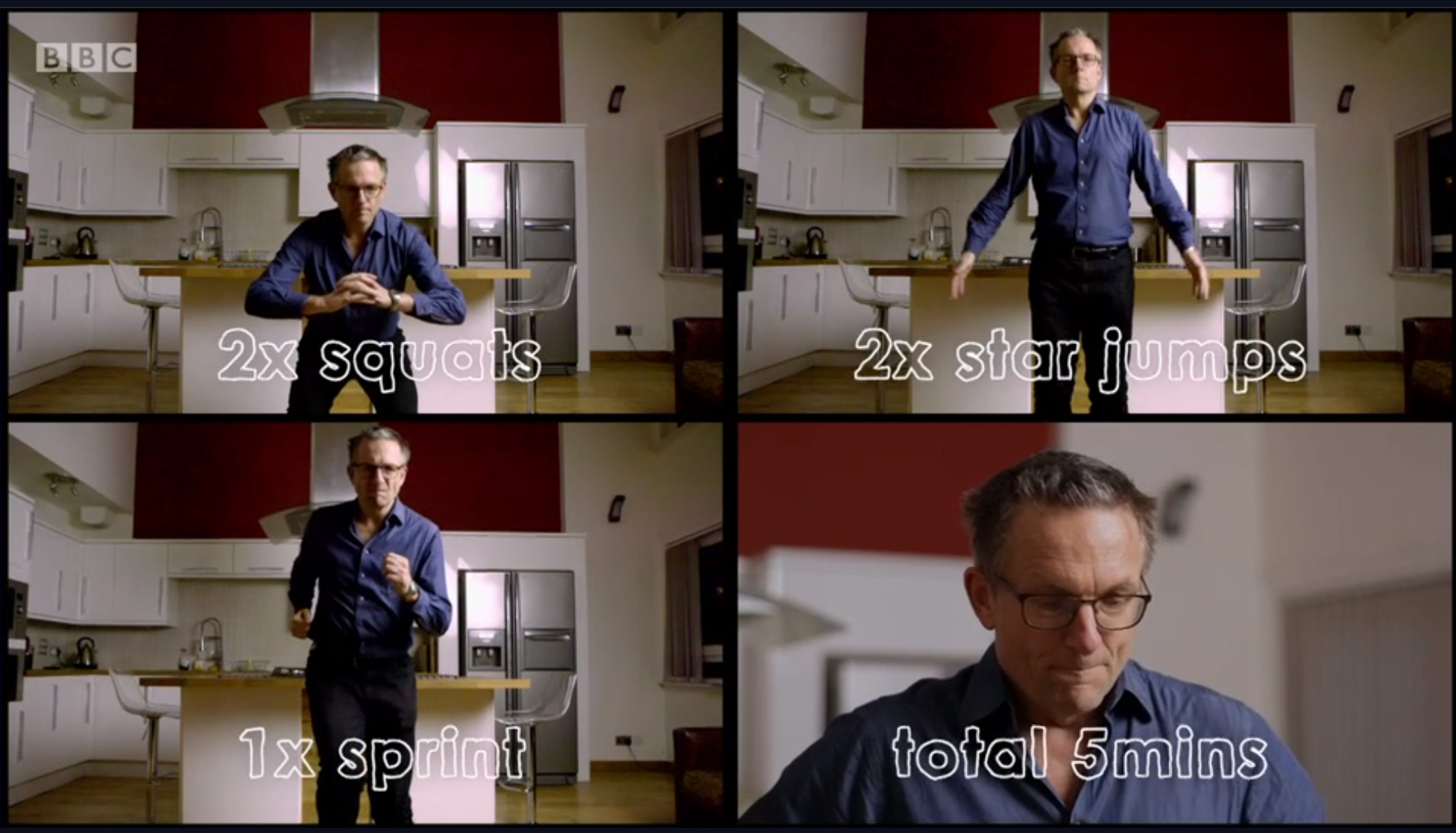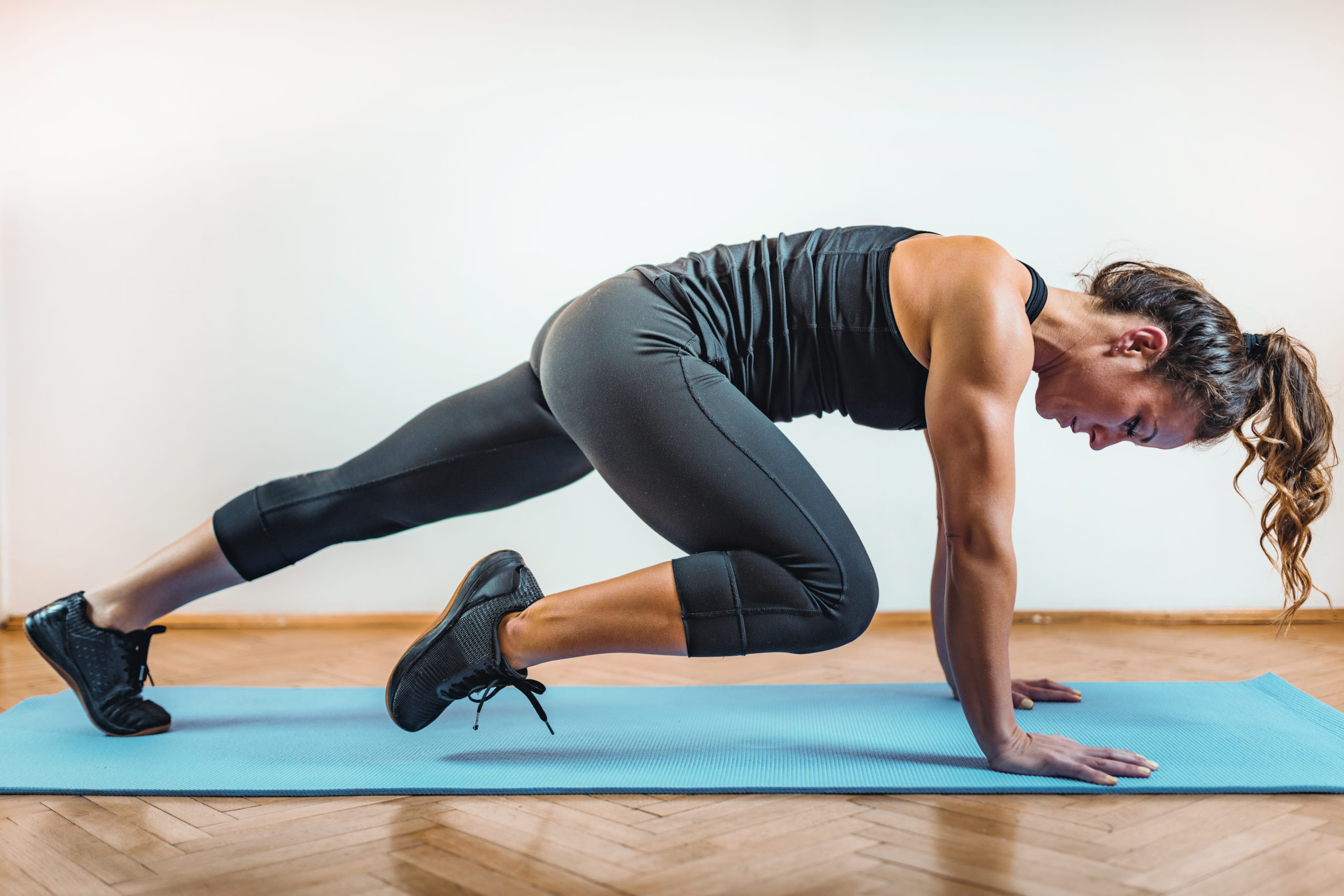Michael Mosley teams up with scientists to uncover what it really takes to stay fit and active in the latest instalment of, BBC’s “The Truth About…”.
With the help of science and studies, Mosley reveals how Brits can get more active without the need to commit lots of time or in his words, “maximum gain, for the minimum pain”.
First things first, you’ll need to find out how fit you currently are by taking a few quick tests, which you can do at home.
Chair Stands – How long does it take you to do 10 chair stands? This assesses the strength of the biggest muscles in your body, the faster the better.
See how you stack up!
- Men under 35: 10 seconds
- Women under 35: 12 seconds
- Men 35 – 55: 13 seconds
- Women 35 – 55: 15 seconds
- Men over 55: 18 seconds
- Women over 55: 19 seconds
Step Up, Step Downs – 3 minutes – up, up, down, down. This tests your heart rate, the fewer beats per minute once time is up, the fitter you are.
See how you stack up (BPM)!
- Under 35s: males 105, females 110
- Under 55s: males 110, females: 115
- Over 55s: males 115, females: 12
Traditional fitness has been revolved around 1-hour workouts of moderate intensity whether that be weights or cardio.
The popular 10,000 steps a day challenge is an easy way to stay active, as 13 million Brits track their steps. Although the issue is it’s time-consuming. 10,000 steps are roughly the equivalent of 5 miles, which would take 1 hour 40 minutes at an average walking pace… it’s difficult to fit in every day if your job role doesn’t involve walking.
Do we really need to be spending this long a day to stay fit?
A New Method
Active 10 x 3, which is three 10-minute brisk walks per day has been shown to have much better results than the 10,000-step challenge, despite being a much shorter workout.

The activity revolves around staying in the moderate to vigorous intensity zone for longer, so despite being quicker it yields better results.
So, shorter but more intense workouts are more effective than the longer, lower intensity workouts we’re accustomed to.
What happens to our body during these periods of vigorous movement?
Your glycogen stores reduce, and the body responds to the stress of vigorous movement by trying to make it more resilient, which improves the cardiovascular system.
This is what makes HIIT or high-intensity interval training so effective, it gets our bodies moving quickly and vigorously in a short amount of time.
Is 2 minutes per week all you need?
It’s said that just 2 minutes a week of HIIT can really transform your body.
The show put this to test by installing a London exercise bike in a London office and testing 6 busy office workers.
They cycle as hard as they can in just two bursts of 20 seconds, just three times per week.
Five weeks later, they found that all the workers made a significant improvement, the highest being a 14% increase in fitness levels, with the average being 11%! Proof that you don’t need to invest a lot of time to achieve results.
HIIT is a great way to stay fit for less time. See below a beginner HIIT workout you can try.
- gentle jogging to warm up/recover
- 2 minutes of squats
- 2 minutes of star jumps
- 1-minute sprint

Credit: BBC
A 5-minute circuit completed without rest, followed by a 30 – 45 second rest period before doing the circuit again. Repeat for 20 minutes or you reach fatigue.
Or why not get started with ’The Body Coach TV’ Jo Wicks to get us motivated.
Get Strong Instead of Skinny
Strength training is important for mobility and health, while a higher muscle mass makes us more efficient at burning energy and helps you digest sugar, which reduces your risk of diabetes.
After 35 you start to lose muscle mass at a rate of 1% per year, which although seems negligible, can make even walking up the stairs difficult decades down the line.
So, what’s the best way to gain and maintain muscle – Is it light or heavy weights?
Mosley put it to the test, with volunteers training in a very unconventional way.
The volunteers lifted light weights on one arm and leg and heavy on the other for 2 sessions per week for six weeks.
The results showed that it made absolutely no difference, but the volunteers all preferred heavier weights, as lighter weights took longer before you could reach a point of exhaustion.
Once the six weeks was up the group showed a 25% increase in strength.
Staying Motivated
Now we know the most effective methods to workout, how do you stick to a plan and stay motivated?
The trick is to find things you enjoy during exercise, do it with someone that you enjoy the company of. Find another source of motivation rather than willpower alone.
We don’t have to invest enormous amounts of time per week to get fit. We can achieve significant results on as a little as 2 minutes per week vigorous exercise. There’s really no reason why you shouldn’t be getting active!
The Truth About Getting Fit was aired on BBC, 31st January 2018: https://www.bbc.co.uk/iplayer/episode/b09qjl7d/the-truth-about-25-getting-fit





